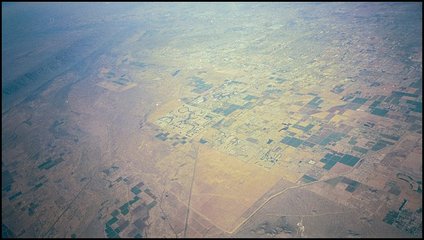Amateur RADIO travels to the edge of space via ansr-76

A view from ANSR balloon
Once again space enthusiasts and amateur radio have joined hands for another successful near space excursion
Members of the Arizona Near Space Research group launched their ANSR-76 payload laden balloon to the edges of outer space.
With a predicted altitude of 90,000 ft., ANSR-76 rose to 90,157.6 feet before bursting.
The mission which carried student made payloads to the edge of space might have been more appropriately designated as US-66, as the entire flight path followed America's most famous roadway, historic "Route 66".
Members of the Arizona Near Space Research group launched their ANSR-76 payload laden balloon to the edges of outer space.
With a predicted altitude of 90,000 ft., ANSR-76 rose to 90,157.6 feet before bursting.
The mission which carried student made payloads to the edge of space might have been more appropriately designated as US-66, as the entire flight path followed America's most famous roadway, historic "Route 66".
Amateur radio played an important role in the flight. APRS beacons, cross band repeaters, Fast and Slow Scan ATV were all onboard.
Amateurs in Tucson 225 miles away reported hearing calls via the cross-band repeater. Some receiver sensitivity issues were reported as well as a report of spurs on 2 meters. A cold solder joint on a connection created issues with camera contrast at lower altitudes.
The picture quality improved at higher altitudes where the cold temperatures constricted the metal and created a tighter mechanical union.
Amateurs in Tucson 225 miles away reported hearing calls via the cross-band repeater. Some receiver sensitivity issues were reported as well as a report of spurs on 2 meters. A cold solder joint on a connection created issues with camera contrast at lower altitudes.
The picture quality improved at higher altitudes where the cold temperatures constricted the metal and created a tighter mechanical union.


